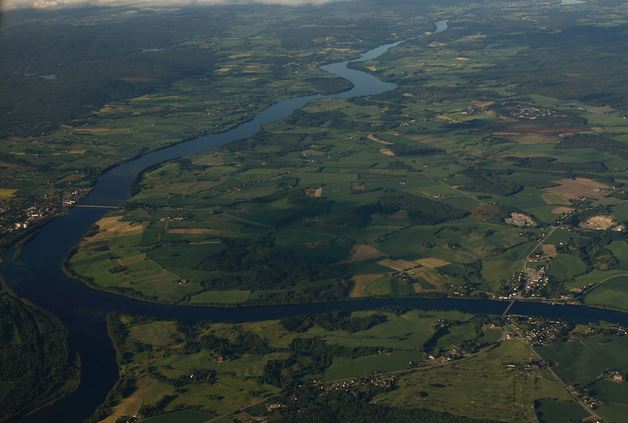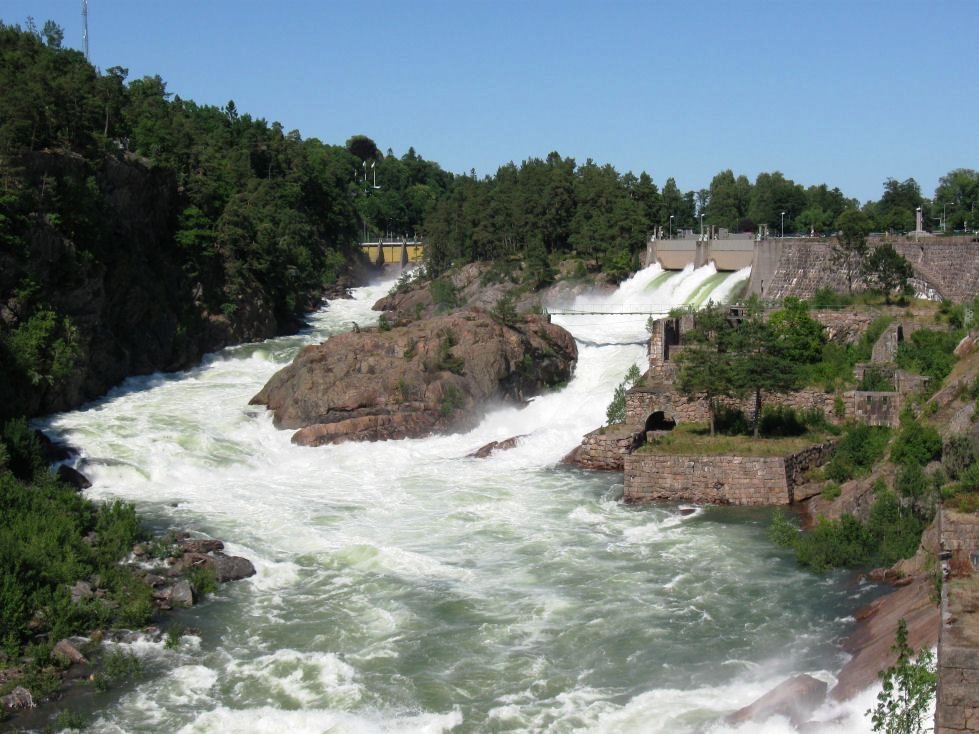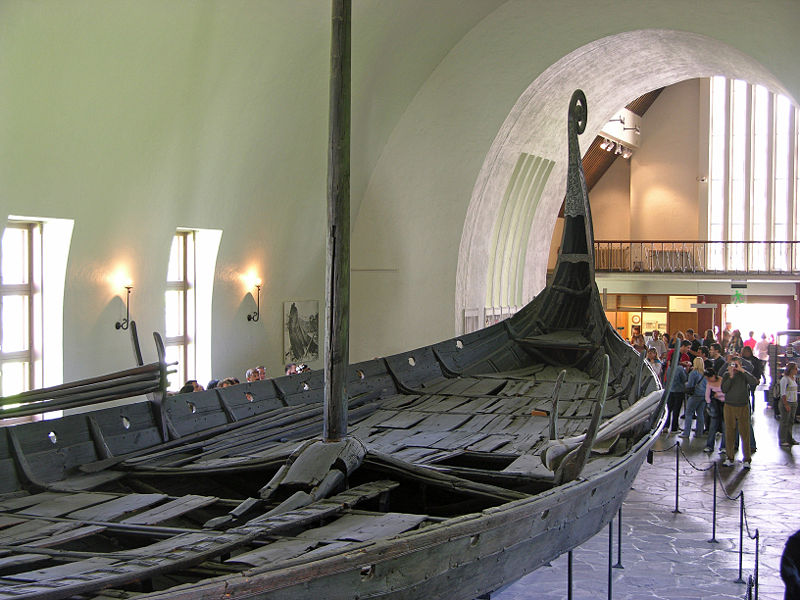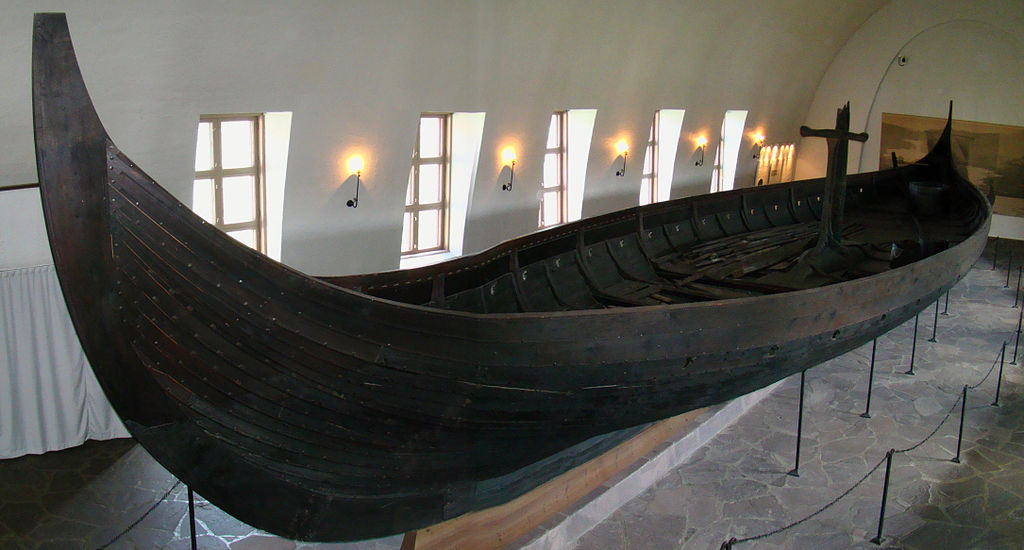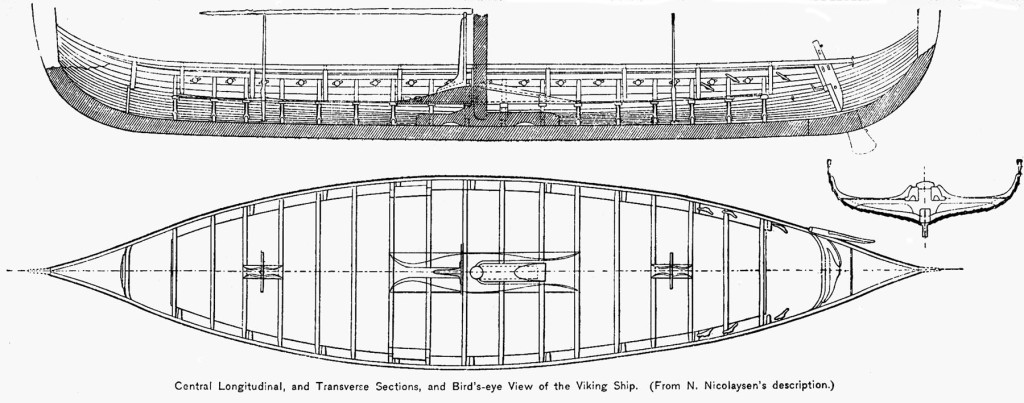“The Longships” by Enya
The longships.
Give me a moment while I sit back and ogle the memories. Tales of the Drui all started with a tantrum. I was so angry at another book I had read where the women were flaky and thrilled that they had been kidnapped and raped. I was enraged, to say the least, and created Kallan out of spite.
Everything those women weren’t, Kallan became. Strong, Independent, intelligent…Tales of the Drui then took shape around Kallan. The more I built the story around her, the more the story came together. Almost right away, I knew I was working with a Nordic fantasy. Within two months, I knew I wanted a cross world where part of the story took place in Midgard, which I would structure after 10th century Norway, and the other part of the story took place in the mythical realms of Under Earth and Alfheim.
No matter how I sliced it, I was writing a Viking fantasy lived through the elves’ point of view. The moment I realized I was dealing with Vikings one decision became very clear to me: I had to show the Longships! I could not write a book about Vikings and not show the longships!
An author has very little liberty where their story takes them. Any avid reader can sense when an author forces the story. The story goes, where the story goes. This is something I have believed since I became a writer and had to write the story in a direction I did not want it to go. Needless to say, despite keeping my eyes wide open and staying alert for the first opportunity to write in the longships, no such opportunity came.
I was grossly disappointed.
On one of my rewrites, the opportunity arrived and I jumped. I can not emphasize this enough. I whooped and flew out of my chair dancing a gig. Kallan would be sailing down the Glomma River (The Raumelfr as shown on the map, which is the Old Norse name for “Glomma”). I was thrilled and hit the books. Uh…well… Google and Wikipedia. I had to get this right.
This is the Glomma (Pictured left), the river that runs top to bottom. The Vorma River runs from right to left and intersects with the Glomma. This river (The Glomma) is the longest river in all of Norway and drains at the Kattegat. 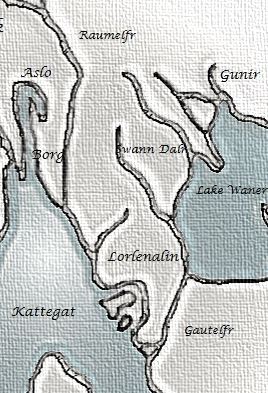 The Kattegat is the ocean located between Denmark and Norway/Sweden. It literally means “The Cat Gate.” It is named this because there is only one path through the Kattegat in which you can sail. Veer off this path and your hull will be shredded by the bottom of the Kattegat. It is said, that the path in which a sailor can steer his ship, is as narrow as a gate barely wide enough for a cat to fit through. Ergo, Cat’s Gate. The Kattegat.
The Kattegat is the ocean located between Denmark and Norway/Sweden. It literally means “The Cat Gate.” It is named this because there is only one path through the Kattegat in which you can sail. Veer off this path and your hull will be shredded by the bottom of the Kattegat. It is said, that the path in which a sailor can steer his ship, is as narrow as a gate barely wide enough for a cat to fit through. Ergo, Cat’s Gate. The Kattegat.
Kallan will sail down the Glomma, into the Kattegat and up the Gota Alv (Shown on the map as “Gautelfr,” which is the Old Norse name for “Gota Alv”) in Sweden. From the Gota Alv, they enter Sweden’s Lake Vanern (Shown on the map as “Wanern,” which is the Old Norse name for “Vanern”). I spent months pouring over the currents, the rivers, the Kattegat, and Lake Vanern. My research came to a halt when I arrived at Trollhattan.
Trollhattan is the Swedish village where the SAAB car factory is located. When I say SAAB is located here, I mean it is located alongside the Trollhattan falls.
Trollhattan means “Troll steps.” They are a series of waterfalls that drop more than twenty feet. A hundred years ago, the village Trollhattan built a dam and, to this day, every third Thursday, Trollhattan releases the water. It is such a sight to behold that Swedish schools have field trips to SAAB on those days to witness the water release after touring SAAB. Och! I wish I went to high school in Sweden!
What does any of this have to do with Vikings? Simple! This river (pictured above) is called the Gota Alv and these falls are located just south of the Lake Vanern. You are not getting a Viking longship up the Trollhattan Falls…but the Vikings did! We have substantial evidence that proves the Vikings steered their ships from the Kattegat up the Gota Alv to Lake Vanern!
As an author, this was my challenge. How did they do? On to the longships!
Only two complete ships have ever been excavated: The Oseberg Ship and Gokstad Ship. More have been found, but only in pieces. One ship is located at the bottom of Lake Vanern and is still there. That is it. Two complete ships. To the left, is the Oseberg ship located in Oslo. The museum, by the way, was built during the excavation in the 1920’s for no other purpose than to house these ships because prior to the archeological find, there was nothing available to store the ships! So cool (Yeah…I’m a nerd)! While they unearthed the ship, they built the museum then rolled it through the streets of Oslo to the museum site!
The second ship, The Gokstad Ship is pictured to the right. On the Gokstad ship, you will note the trestle near the ship’s aft (rear). The trestle is the “T” shaped thing. It is clearly not the mast as seen on the Oseberg ship above.
With the aid of both ships, archeologists were able to piece together a diagram of what the Vikings longships once looked like. What they came up with is a longship with a mast and two trestles: One at the bow, the other at the aft. As a writer I was at once intrigued. What were these trestles for?
More research. I can not emphasize how difficult it was to find this answer. Only a handful of pictures showed the trestles. I combed through NOVA, YouTube, PBS, History Channel…I uncovered old books. I even watched old movies (“Vikings” starring Kirk Douglas). Occasionally, the trestles were shown. Most of the times, they were not.
I finally found my answer in an old Encyclopedia styled book called “The Viking.” Crescent Books 1967 A division of Crown Publishers. The book is so old that there is no ISBN or I would have included it. In this book, I found my answer. The trestles were built to hold two things: the mast when a storm hit and the Norsemen had to row…and roller logs. Roller logs! ROLLER LOGS! What are roller logs? More research.
When the Norsemen built their longships, they were built in the village. The Gokstad ship—the longest ship found—is 76 feet (23.3 metres) long. This ship was not built in a dry dock.
How do you get a 76 feet ship to the water? Roller logs! The Norsemen rolled the ship on a series of logs and pulled it down to the water. Here was the answer to my question “How did the Vikings sail up the Gota Alv with a 20 foot waterfall in their path? Roller logs!
The Norse used roller logs to pull the ship to land and rolled the ship on land around the falls. The proof? There are actual Viking ship paths archeologists have found in the forests that were cleared away for this purpose. They found hundreds of these paths. They mapped them. I stumbled upon the map in my research and yes! They roller logs their 76 feet ship on land around the Trollhattan Falls! They were an actual route frequently used by the Norsemen. Oh! That is so going in the book!
View the end result…an excerpt from Book #2 Lorlenalin’s Lies…and I just have to add…I had SO MUCH fun researching the sailing terms and all the parts of a ship!
Gathering up her skirts, Kallan assisted the Ljosalfar as they bailed the water over the gunwale. Desperate to escape the flood, a pair of ship cats clambered, mewing, onto the mast fish, where blankets and chests and been heaped and dumped as the deck hands proceeded to launch the water.
Steering closer to land where the current was milder, Bergen pulled the tiller against the bank of the river until he ran the risk of running aground. The waters bombarded the ships, increasing their flow the farther upstream they rowed, until the white waters of the ruthless rapids forced their course to end.
After ordering the ships to land, Bergen and Rune led their men to shore. A new energy encompassed the warriors as they moved to drop their oars and took up the collection of roller logs that had laid stationary for most of the voyage home.
Before Kallan could ask, two Ljosalfar hoisted a log from the trestles and passed it overhead to the next pair, who passed it along to those waiting on land. There, they positioned one log in place for the next log. With rehearsed precision, they laid the logs in rows before the ships while a handful of others lowered the yardarm then the masts and secured the rigging around the fore stern. Awed, Kallan watched as they synchronized their steps in time to Bergen, who barked his orders to haul as he took up a rope himself.
The logs rolled freely beneath the boat as they pulled their ships from the water to land. Water drained from the hull and the rigging clanked and clamored in time to the occasional cat mew while ship rats scurried about freely. As soon as the last log rolled out from beneath the ship’s stern, a pair of men took up the log and raced it to the front of the ship, laying it down in position with barely enough time to run back to the stern where the next log lay waiting.
The next ship followed suit, and the next, until all six ships had been brought ashore, pulled by the rigging as they pushed their way along the river’s bank where a makeshift path had been worn with use.
“You do this often?” Kallan asked, unnaturally rigid as another pair of warriors ran to the fore stern with a log.
Rune walked along beside her as the caravan of beached ships creaked and complained beneath the weight of their waterless passage.
“Often enough,” he answered simply, batting a low hanging branch from his path. “We build the ships on land and roll them to the rivers. This is the first of seven trails between here and Gunir.”
Kallan shifted her attention just enough to catch Rune’s eye as he walked several steps behind their ship.
“Surely you can sail the rapids,” Kallan said, urging him on with a smirk. Even her jovial mood felt chafed and cold.
“The rapids, yes.” Rune stepped over a small boulder in his path. “The falls nearly three fadhmr high? No. This landing is the last clearing before we’d be forced to turn back.”
Without further question, she followed quietly, turning to glance over her shoulder in time to spot Gunnar leading Astrid and Freyja alongside the gray mare and two drengr he had recruited to help with the horses. With a smile that crept from the corner of his mouth, she turned back to her ship, joining Rune in pulling back the low hanging branches as they made their way through the forest.
Slowly, the caravan pushed over the land, filling the wood with the whines of six longships as if in protest to their land-locked state. The late hours of the afternoon sun burned away and, in the early evening, when the men had grown deaf to the incessant creaking of keels, sudden, riotous cheers exploded at the sight of the quiet calm of a glass lake. Lake Wanern was so wide that the horizon swallowed the other side.
The Ljosalfar rolled the ships back into the water and heaved the logs into the trestles. All evidence of the river was gone. Gunnar returned the horses to the boats and the six groups of Ljosalfar climbed aboard once more. As Ottar took the tiller, Kallan nestled into her cluster of furs and blankets. The subtle sounds of water slapping against the strakes returned and the longships settled, contented to be in the water again.

